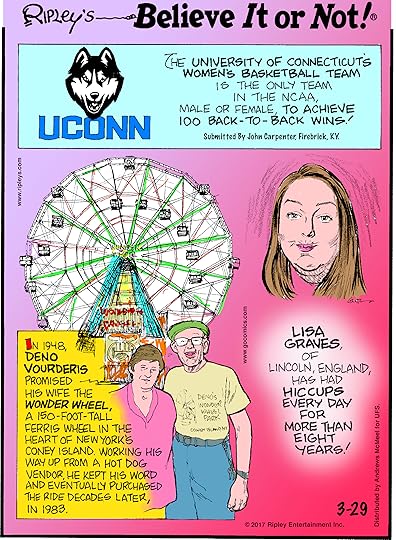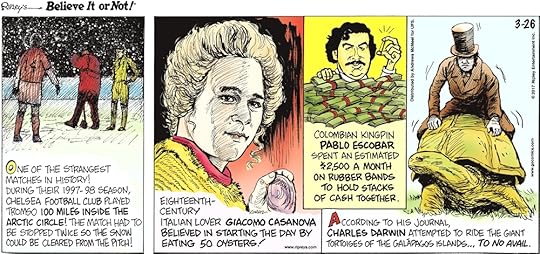Ripley Entertainment Inc.'s Blog, page 420
March 29, 2017
Cringe-Worthy Cases of Self-Surgery
Featured in Ripley's Believe It or Not!

In This Episode—S01E10
In today’s show we talk about cringe-worthy cases of self-surgery: auto-appendectomy, at home castration, escaping a canyon alone, and DIY plastic surgery. Let’s explore that together!
Share & Subscribe
If you liked the show, please share it with your peeps. Remember to SUBSCRIBE to our channel to stay BION-informed!

What does it take to remove an appendix in sub-zero temperatures?
As luck would have it, the one man to get appendicitis on a 12-man Soviet expedition in the Antarctic was the doctor.
In 1961, Dr. Leonid Rogozov had to perform a delicate appendectomy on himself in sub-zero temperatures using only his sense of touch, and the reflection of a small mirror held by the shivering hands of a colleague.
If shivers weren’t enough to complicate the auto-appendectomy, he had to be careful with the anesthetic—he had to use Novocaine instead of morphine to keep his senses sharp. The procedure lasted a painstaking 1 hour and 45 minutes but made a full recovery, even removing the stitches 12 days later by himself.

The Self-Castrating Mad-Hatter
Boston Corbett was a hatter (hat maker) in the 1800s, and often handled mercury-nitrate, a substance that with prolonged exposure leads to hallucinations, psychosis, and uncontrolled twitching—hence “mad as a hatter”.
One day after being propositioned for services by some ladies of the night, he was so distraught by the temptation, that he castrated himself with a pair of scissors. He actually ate dinner and went to a prayer meeting before seeking professional medical help.
But that’s not where Boston’s story ends. Mr. Corbett would go on to be the man who escaped a death sentence from the Union Army, attacked a local legislator with a revolver, and became best known as “Lincoln’s Avenger” for shooting and killing none other than John Wilkes Booth, Abraham Lincoln’s assassin.

Boston Corbett
What are people really capable of when caught between a rock and a hard place?
After a rock slide left canyoneer Aaron Ralston’s arm pinned under a boulder for six agonizing days, he did the unthinkable.
Using the blade and pliers on his multi-tool, Aaron cut through his arm tissue and tore through his tendons.
He was able to avoid severing his arteries by improvising a tourniquet; he eventually cut the last of his skin and nerves to free his body from the enormous boulder.
Dehydrated and having lost a quart of blood, he then rappelled 120 feet down a cliff and hiked 8 miles before finding help.

Multi-use tool
Plastic Surgery on the Run
Tatsuya Ichihashi was able to evade arrest for 2 ½ years due, in part, to the many cosmetic alterations he made to his own face.
He scissored off his lower lip, dug moles off his cheek with a box-cutter, and used a needle and thread to truss up his nose until it was permanently altered.
He failed to finish many of his own alterations because of the excruciating pain and performed many of these procedures in public bathrooms.
He was eventually caught after raising suspicion when he tried getting more alterations done by a professional plastic surgeon. Believe It or Not!

Check out our earlier blog on Self Surgery!
Never Miss An Unbelievable Story!
Newsletter Subscription (Sidebar)
Sign up for our Newsletter and get weird news and exclusive offers to Ripley's, delivered straight to your inbox!
Name
*

Odor-Eaters National Rotten Sneaker Contest
Featured in Ripley's Believe It or Not!
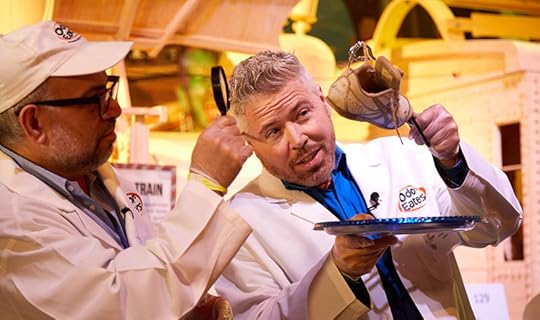
For more than 40 years, the Odor-Eaters Rotten Sneaker contest has celebrated kids’ active lives–that is, the truly offensive-smelling footwear resulting from so many of the things kids like to do!
Kids from all over the U.S. look forward to showing off their foul-smelling sneakers for a chance to win a trip to the national competition at Ripley’s Believe It or Not! in Times Square.
This event is the ultimate test–the worst of the worst–and each year demonstrates how smelly kid’s sneakers can get while they’re doing what they enjoy.

This year’s contestants had to work hard to win over the judges because our veteran panel knows what it takes to win this competition. Professional judges included NASA “Master Sniffer” George Aldrich, Chemical Specialist for NASA space missions, and Rachel Herz, Ph.D., an expert and author on the psychology of smell.
This year’s winner was Connor who took home the grand prize of $2,500. Connor confesses that his sneakers got dirty and smelly because he steps into a lot of animal poop on his aunt’s farm. He also loves fishing and camping which gets him into a lot of smelly situations.
Connor also received a two-night stay in New York City, tickets to the Broadway show Aladdin, the Golden Sneaker Award, and a supply of Odor-Eaters products to kick out the odor from his new sneakers. Connor’s shoes will also be enshrined in the Odor-Eaters “Hall of Fumes”.

Rotten Sneaker Contest
This Is the Original Mold Used to Make Penicillin
Featured in Ripley's Believe It or Not!

When penicillin was developed by Alexander Fleming in 1928, it was seen as a miracle cure.
“When I woke up just after dawn on September 28, 1928, I certainly didn’t plan to revolutionize all of medicine.” – Alexander Fleming

Literally overnight, the world’s first antibiotic was born. The discovery was the result of Fleming’s cultures becoming accidentally contaminated.
He was then able to isolate the contaminant and discover it had germ killing properties.
What he called “mould juice” would officially be called penicillin. The drug effectively combatted staph, scarlet fever, pneumonia, meningitis, and diphtheria.
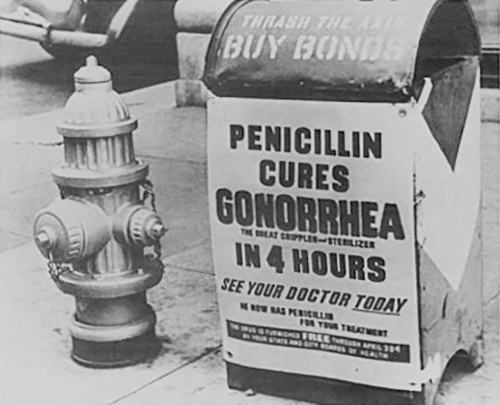
The medicine proved so valuable that doctors would actually recycle the drug from patients’ urine.
The D-Day invasion was even planned in part because of the widening availability of penicillin. Allied forces bolstered their stores of the medicine prior to the operation with hopes the antibiotic would give them an edge in treating their injured soldiers.

Holy Relic of Science
In March of 2017, a sample of the original culture wsold for $15,000.
The mold is sealed in glass with “the mould that first made Penicillin” etched onto its surface by Fleming himself.
A London auction house made the sale, but it originally belonged to Fleming’s niece.
It seemed as if Fleming knew he had discovered the Holy Grail of medicine. He had many glass medallions containing the original mold produced.
He would hand them out to dignitaries including Pope Pius XII, Winston Churchill, and Prince Phillip.
Fifteen grand may seem like a lot, but when Pfizer bought one of these medallions in 1996, they paid $51,000 for the small splotch of mold.
CARTOON 03-29-2017
March 28, 2017
The Mystery of Albert Einstein’s Stolen Brain
Featured in Ripley's Believe It or Not!

When Albert Einstein passed away at Princeton Hospital on April 18, 1955, the pathologist on call, Dr. Thomas Harvey, did the unthinkable – He STOLE Einstein’s brain!
Embed from Getty Images
Einstein Worried About What Would Happen to His Brain
Albert Einstein knew his brain would be of interest to researchers. He left specific instructions regarding his remains:
Cremate them, and scatter the ashes secretly in order to discourage idolaters.
Besides Einstein’s brain, Dr. Harvey also removed the eyes and gave them to Einstein’s eye doctor, Henry Abrams.
Princeton Hospital did not look too kindly on Dr. Harvey’s harvesting of Einstein’s organs. Harvey attempted to explain himself:
I just knew we had permission to do an autopsy, and I assumed that we were going to study the brain.
Harvey’s explanation rings with untruth. Even if the hospital were granted research rights, that certainly would not apply to Dr. Harvey taking personal possession of the organs.
Hans Albert Einstein, the eldest son, granted Dr. Harvey permission to research the brain, but it was too late. After Dr. Harvey refused to surrender the organs, he was let go from the hospital.
Why Steal Einstein’s Brain?
Dr. Harvey wanted to see if Einstein’s brain could shed insight on the nature of genius. He sectioned over 200 pieces of the brain and sent them to neuropathologists. The remainder of the brain was placed in formalin-filled jars.
Though not a brain specialist himself, Harvey also conducted his own research on Einstein’s brain. When asked about his findings, he replied he was only a year away from publishing his research. He continued to give this answer for the next forty years – never publishing any findings.
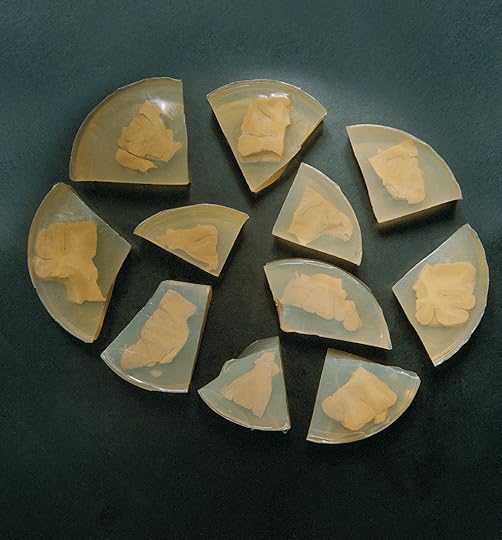
Slices of Einstein’s Brain
The Aftermath
Things did not get better for Dr. Harvey. After his dismissal from Princeton Hospital, his wife left him and threatened to throw away what was left of the brain. Dr. Harvey retrieved the brain from his ex-wife and moved to Wichita, Kansas as a medical supervisor in a biological testing lab. He kept the brain in a box and stashed it under a beer cooler.
He later moved to Missouri and started practicing medicine, but after failing competency exams, he lost his medical license.
Moral of the story: Don’t steal organs that don’t belong to you.
What about Einstein’s Eyes?
Dr. Harvey had given Einstein’s eyes to Einstein’s optometrist, Dr. Henry Abrams. It is believed they are locked away in an NYC safety deposit box. Every once in awhile a rumor surfaces that the eyes are going up for auction, but Abrams insists he will never sell the eyes.
The Fate of Einstein’s Brain
One of the largest collections of Einstein’s brain, and one of only two places in the world to see Einstein’s brain, is at the Mütter Museum in Philadelphia.
The brain is sectioned into 20 slides.

Slides of Einstein’s brain. Via The Mütter Museum.
This Mouse Uses Echolocation and is Basically a Flightless Bat
Featured in Ripley's Believe It or Not!

Despite being nocturnal, the Chinese pygmy dormouse has pretty bad eyesight. Instead, they use echolocation to dart through the forest underbrush, avoid predators, and scavenge for food.
Their eyes are near useless. Folds in their retina misshape the images projected into their pupils, so they have almost no ability to focus their eyes. They can only tell the difference between daylight and darkness.
Despite their ocular limitation, they have no problem navigating arboreal canopies, stony cliffs, or thick grass.
By emitting ultrasonic chirps, and then carefully listening to the reflected sound, they can not just sense their surrounding perfectly without light, but can also “see” overhead, behind them, and around corners.
This echolocation is the same skill bats use to navigate the night skies and hunt tiny flying insects.
Scientists even think that these dormice could be the missing link between bats and terrestrial echolocators that could decide whether bats developed echolocation before or after they gained flight.

MINI BION
“BIONs” – short for Believe It or Not – is the word we use at Ripley’s to refer to anything that is unbelievable and worthy to become part of Ripley’s lore and collection.
Source: This Mouse Uses Echolocation and is Basically a Flightless Bat
CARTOON 03-28-2017
March 27, 2017
CARTOON 03-27-2017
March 26, 2017
CARTOON 03-26-2017
March 25, 2017
CARTOON 03-25-2017
Ripley Entertainment Inc.'s Blog
- Ripley Entertainment Inc.'s profile
- 52 followers


